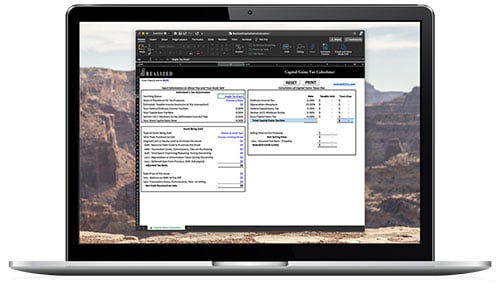
For investment property owners, the sale of an appreciated asset is often bittersweet. While it’s fulfilling to see an investment pay off, it also triggers capital gains taxes, a significant expense no investor enjoys paying. Fortunately, certain property improvements can help mitigate this tax liability. By strategically investing in your property, you can increase its cost basis, thereby reducing the taxable capital gains when sold.
Understanding Capital Gains
Capital gains are the profits made from selling an asset at a higher price than its purchase cost. For real estate, if you hold the property for more than a year, any gains are typically taxed at long-term capital gains rates, which are generally lower. However, depreciation recapture can increase the overall tax rate applied to profits made on real estate sales.
To minimize capital gains taxes, consider making capital improvements to your property before selling it. Capital improvements are investments that increase the property’s value, prolong its useful life, or adapt it to new uses. These improvements can be added to the property's cost basis, thus lowering the amount of profit subject to taxation.
Eligible Improvements
1. Structural Enhancements
Investing in structural improvements not only enhances property value but also contributes to tax advantages. Examples include adding new rooms, updating electrical systems, or replacing roofing and siding. Such improvements tend to have a lifespan of more than a year, qualifying them as capital improvements that increase the cost basis.
2. Energy Efficiency Upgrades
Energy-efficient enhancements, like installing solar panels or high-efficiency HVAC systems, can also be added to your property's cost basis. These upgrades do not just modernize your property but can also attract eco-conscious buyers, potentially increasing marketability and resale value.
3. Modernizing Utilities
Upgrading plumbing and electrical fixtures can substantially raise a property's value and extend its lifespan. These are significant improvements that boost the property's functionality and appeal to prospective buyers, making them a prudent choice for investors looking to mitigate tax liabilities.
Non-Qualifying Items
It’s important to distinguish between capital improvements and regular maintenance. Routine repairs, such as painting, fixing leaks, and replacing parts, are considered maintenance expenses, which do not increase the cost basis of your property. Similarly, improvements that wear out within a year cannot be capitalized into the cost basis.
Strategic Planning for Selling
Planning the timing of your property sale can further enhance tax efficiency. Opting for a 1031 exchange is another strategic move, allowing investors to defer paying capital gains taxes by reinvesting sale proceeds into a similar property. This deferral can continue indefinitely, as long as the capital is reinvested according to the exchange rules.
Conclusion
By investing in eligible property improvements, you can effectively reduce your capital gains liability when selling your investment property. It is advisable to keep detailed records of all improvements made and consult with a tax professional to ensure compliance with IRS regulations. This proactive approach not only enhances property value but also maximizes investment returns by minimizing tax expenses.


